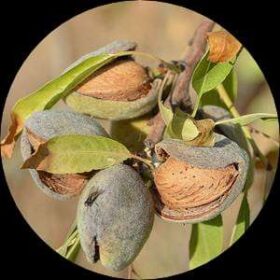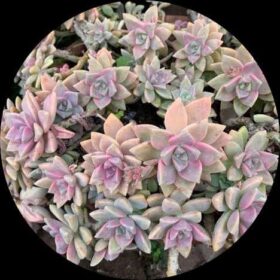- Empty cart.
- Continue Shopping
Alamanda Coffee Brown
₹430.00Current price is: ₹430.00. Original price was: ₹620.00.
| Genus: | Allamanda |
“Create a captivating garden with Coffee Brown Alamanda Flower Plants. With their unique and eye-catching brown flowers, these plants add a touch of warmth and richness to any landscape. The coffee brown blooms, set against lush green foliage, create a striking contrast and bring a cozy and inviting atmosphere to your outdoor space. Coffee Brown Alamanda Flower Plants are ideal for adding a focal point to your garden beds, borders, or containers. Their vibrant and captivating flowers are sure to be a conversation starter and make your garden stand out. Enjoy the beauty and charm of Coffee Brown Alamanda Flower Plants as they bring a touch of elegance and natural beauty to your outdoor sanctuary.”
Alamanda hybrids refer to cultivated varieties or crosses of plants within the Allamanda genus. Hybrids are created by crossbreeding different Allamanda species or varieties to produce offspring with desirable traits. Here is a general description of Alamanda hybrids:
1. Appearance: Alamanda hybrids can exhibit a wide range of appearances, as they are the result of intentional breeding to combine specific characteristics. They may inherit traits from their parent plants, including variations in growth habit, leaf shape, and flower color. Common traits include glossy foliage, lance-shaped leaves, and trumpet-shaped flowers.
2. Flowers: The flowers of Alamanda hybrids can come in various colors, depending on the parent plants involved in the crossbreeding. While yellow is the most common color for Allamanda flowers, hybrid varieties may also display shades of orange, pink, or even bi-colored blooms. The size and shape of the flowers can also vary.
3. Blooming Season: Similar to their parent species, Alamanda hybrids typically bloom during the warmer months, such as spring and summer. The exact blooming season may vary depending on the specific hybrid variety and local growing conditions.
4. Habitat and Distribution: Alamanda hybrids are cultivated plants and are not found in the wild. They are commonly grown in tropical and subtropical regions around the world where suitable conditions exist.
5. Uses: Alamanda hybrids are primarily cultivated as ornamental plants for their attractive flowers and foliage. They are often used in gardens, landscapes, or as potted plants to add color and visual interest. The specific uses and cultivation practices may vary depending on the particular hybrid variety and the preferences of the gardener.
6. Maintenance: The maintenance requirements for Alamanda hybrids can be similar to those of their parent species. They typically prefer full sunlight, well-drained soil, and regular watering. Pruning can help maintain the desired shape and size of the plant, as well as encourage branching and more abundant flowering.
It’s important to note that there are many different hybrid varieties within the Allamanda genus, each with its own specific traits and characteristics. The appearance and care requirements of an Alamanda hybrid may depend on the specific parent plants involved in the crossbreeding.
Unveiling the Elegance of Alamanda Coffee Brown
Transform your space with the rich, warm tones of Alamanda Coffee Brown. This sophisticated product brings depth and character to any setting, designed to complement modern and traditional aesthetics alike. With its versatile charm and refined color palette, it’s the perfect choice for anyone looking to add a touch of timeless elegance.
Why Choose Alamanda Coffee Brown?
Alamanda Coffee Brown stands out for its impeccable balance between style and practicality. Its deep, earthy hues exude warmth and sophistication, creating an inviting and luxurious ambiance. Whether you’re revamping your home, office, or any other space, this product is crafted to seamlessly enhance your surroundings. Its durability, combined with its sleek appearance, ensures a long-lasting addition to your space.
Perfect for Any Setting
Whether you’re decorating a cozy living room, an elegant dining area, or a professional workspace, Alamanda Coffee Brown fits right in. Its neutral yet striking tone makes it an incredibly versatile choice, pairing beautifully with both light and dark interiors. Elevate your décor with this stunning product and enjoy a look that feels both modern and timeless.
Embrace the beauty and functionality of Alamanda Coffee Brown for your next project and experience first-hand the balance of style and substance it offers. Let this piece redefine your space with its luxurious appeal.
Add to cart
Add a review
Currently, we are not accepting new reviews













Reviews
There are no reviews yet